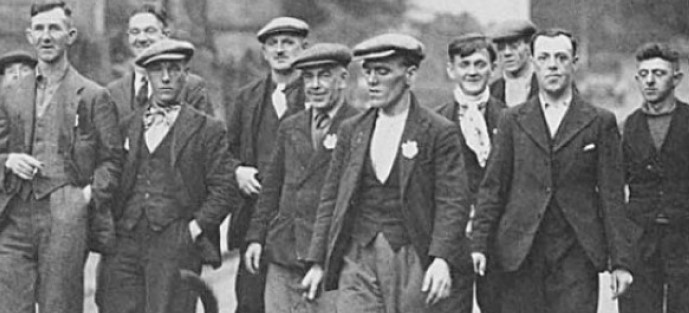“Justice Not Charity”: A History of the Blind Marches
Exploring the influence of the National League of the Blind on disability rights and other social movements of the early 20th century

Disability studies are on the rise but resources to support teaching, research and learning in this area can be difficult to find. Collections like ProQuest’s Disability in the Modern World: History of a Social Movement can help.
This award-winning, interdisciplinary database includes primary source materials like historical newspapers and government records to reveal how early 20th century organizations like the National League of the Blind took on issues such as hunger and unemployment along with the rights of the disabled.
Scholar Dr. Dawn Kaczmar relied on the primary source materials from Disability in the Modern World to research her article, Blind Disability Activism: The Blind Marches of the 1920s and 1930s. In this piece, Kaczmar traced the history of protests organized by the National League of the Blind (known since the 1960s as the National League of the Blind and Disabled) in England to demand government assistance for those who were unable to work.
Historically, blind people had depended on existing Poor Laws but, as Kaczmar pointed out, “because they did not specifically address the needs of the blind, [the laws] often fell short of providing adequate accommodations and resources.” Although charities existed to provide aid to blind people, they did not reliably meet the needs of those they assisted.
So, in 1920, the National League of the Blind organized a three-week long event to raise public awareness for their cause. “Under the banner ‘JUSTICE NOT CHARITY,’ the protestors began their march on April 5, starting from Leeds, Manchester and Newport,” Kaczmar explained. On April 25, more than 200 blind protest marchers converged at their destination in central London where they were joined by thousands of supporters.
It would take 5 days for the prime minister to finally agree to meet with the delegation from the League. Despite his initial apathy to their cause, the Blind Person’s Act of 1920 was passed later that year.
This historic legislation was only the beginning of hard-fought social and political progress to promote and protect the rights of blind people. Over the next two decades, blind marchers took to the streets demanding amendments to clarify language of the original bill and to add provisions which would further extend resources to those unable to work.
Because the 1920 Blind March roused such great public support for the League’s cause, other activist organizations adopted this method of protest to raise awareness and influence policy change. In the 1920s and ‘30s, a series of “hunger marches,” like the 1936 Jarrow March, were led by out-of-work laborers and their champions in protest of rampant unemployment and poverty.
When the main employer in the small rural town of Jarrow shut down, the workers organized a march to London to demand government help. Blind marchers showed solidarity for their struggle by joining the Jarrow protestors, as well as forming powerful coalitions with groups like the Unemployed Workers’ Movement and the Labour Party.
“The history of the Blind Marches and their effects on government policy is just one of the many topics in disability studies that you can research on ProQuest’s Disability in the Modern World collection,” Kaczmer noted.
Read Kaczmer’s article its entirety to learn more about the National League of the Blind and explore additional resources to support disability studies. ProQuest’s Every Voice initiative promotes diversity, equity and inclusion in teaching, research and learning.



